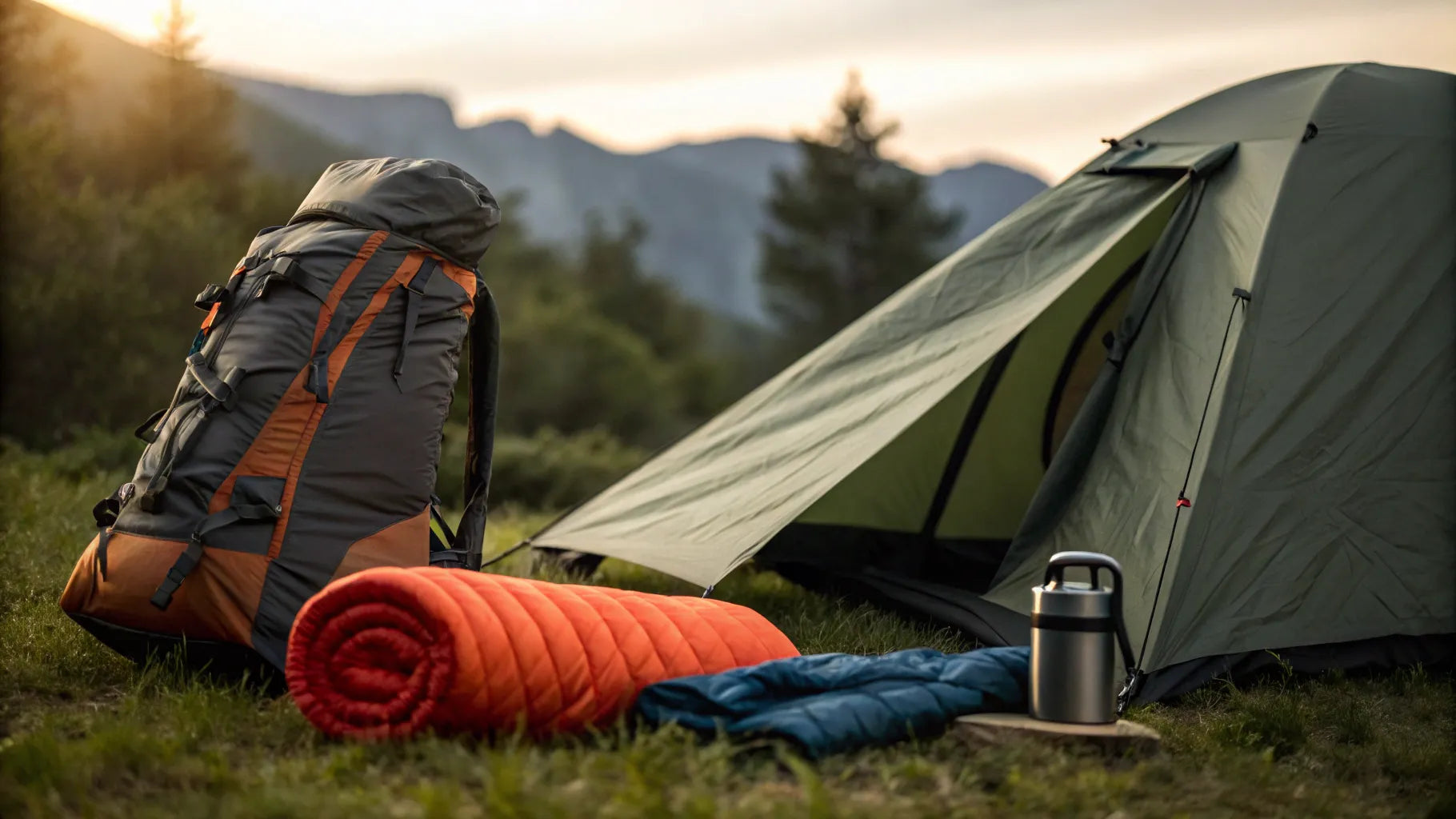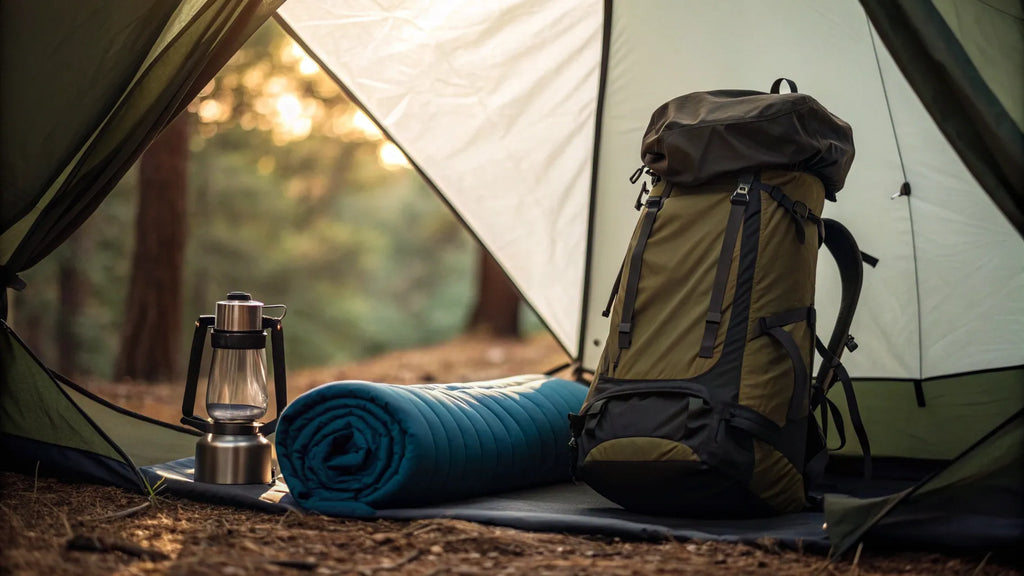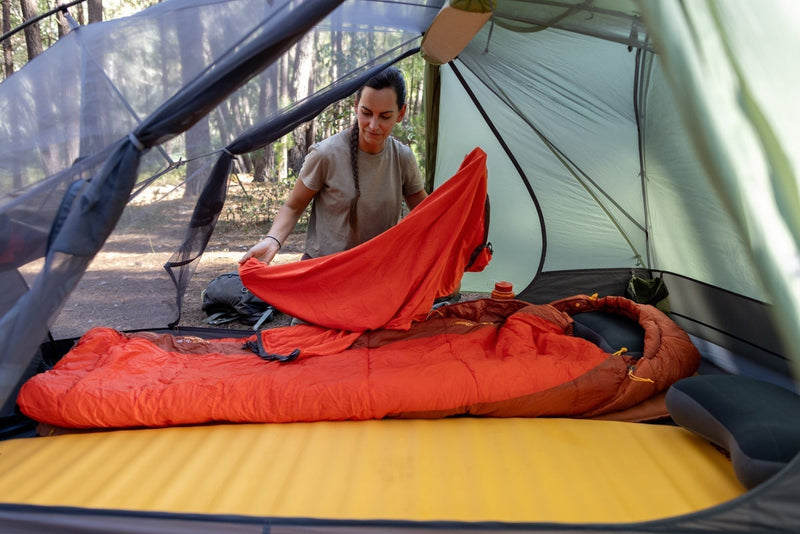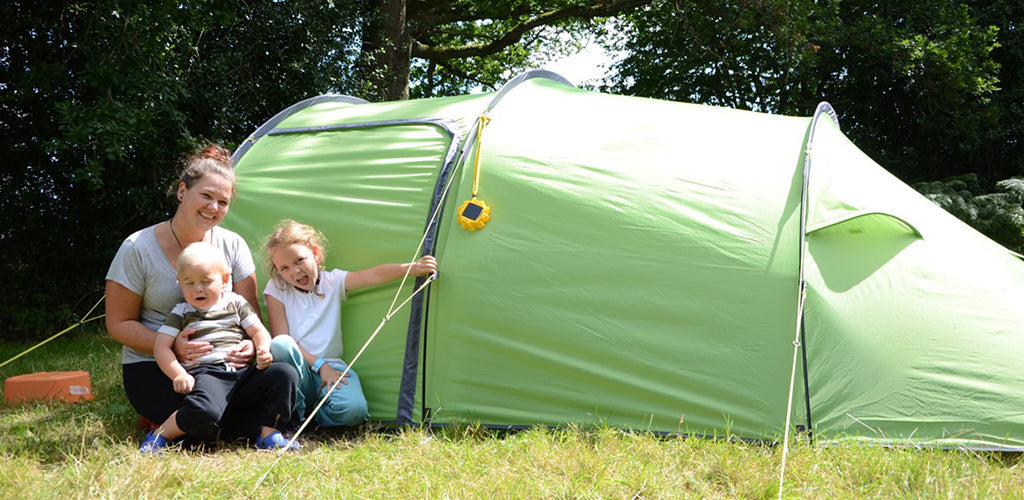Are you ready to escape the noise and spend a night under the stars? Camping in a tent can be one of the most refreshing and rewarding experiences you’ll have.
But before you pack up and head out, you need to make sure you have the right gear. Missing just one essential item can turn your adventure from fun to frustrating. You’ll discover exactly what you need to go camping in a tent—nothing more, nothing less.
By the end, you’ll feel confident and fully prepared to enjoy your trip without any surprises. Keep reading to find out how to make your camping experience safe, comfortable, and truly unforgettable.
Choosing The Right Tent
Picking the right tent is important for a good camping trip. A tent protects you from weather and bugs.
You should think about the tent type, size, and seasons before buying or renting one.
Types Of Tents
There are many tent types for camping. Each type works best for different needs and places.
- Pop-up tents are easy to set up and good for beginners.
- Dome tents are stable and good in windy areas.
- Cabin tents have more space and straight walls.
- Backpacking tents are light and small for hiking trips.
Tent Size And Capacity
Choose a tent size that fits the people who will sleep inside. Don’t forget space for gear.
Look at the tent’s capacity rating. It shows how many people fit inside comfortably.
- A 2-person tent fits two people and small gear.
- A 4-person tent fits four people with some gear space.
- A 6-person tent gives extra room for gear and comfort.
Seasonal Considerations
Choose a tent made for the weather you expect. Tents are rated for different seasons.
Three-season tents work well in spring, summer, and fall. They handle rain and light wind.
Four-season tents are stronger. They protect from snow and strong winds in winter.
- Three-season tents are lighter and breathable.
- Four-season tents have thicker fabric and stronger poles.
- Consider where and when you camp to pick the right tent.
Sleeping Essentials
Camping in a tent means you need the right gear to sleep well. Good sleeping essentials keep you warm and comfortable. They help you rest so you can enjoy your trip.
Focus on items that protect you from the cold ground and cold air. These essentials include sleeping bags, pads, pillows, and blankets. Also, plan your sleeping arrangements carefully.
Sleeping Bags And Pads
Sleeping bags keep you warm at night. Choose one that fits the temperature you expect. Some bags are thick for cold weather, others light for warm weather.
Sleeping pads go under your sleeping bag. They add comfort and stop cold from the ground. Pads come in foam or inflatable types.
- Pick a sleeping bag rated for your camping weather.
- Use a sleeping pad for extra cushioning and insulation.
- Inflatable pads save space but need air.
- Foam pads are durable and simple to use.
Pillows And Blankets
Bring a small pillow for head support. Camping pillows are light and easy to carry. You can also use a stuff sack filled with clothes as a pillow.
Extra blankets help on cold nights. They add layers of warmth. Wool or fleece blankets work well outdoors.
- Choose a compact camping pillow or make your own.
- Pack an extra blanket for colder weather.
- Use blankets for extra comfort or warmth.
Sleeping Arrangements
Plan how many people will sleep in the tent. Space matters for comfort and safety. Arrange sleeping bags and pads so everyone fits well.
Keep items like pillows and blankets inside the tent. Organize gear to avoid clutter. A neat setup helps you relax and sleep better.
- Decide how many people share the tent.
- Place sleeping pads side by side for each person.
- Keep pillows and blankets within reach.
- Store gear away from sleeping areas.
Cooking Gear
Cooking gear is essential for a good camping trip. It lets you prepare warm meals outdoors. You need the right tools for cooking safely and easily.
Choosing the right gear helps you save space and cook better food. It also keeps your campsite clean and safe from animals.
Portable Stoves And Fuel
Portable stoves make cooking simple when camping. They are light and easy to carry. Choose a stove that fits your cooking needs and group size.
Fuel types include propane, butane, and liquid fuel. Pick fuel that works with your stove and is easy to find. Always carry extra fuel for safety.
- Choose a stove size that matches your group
- Check stove weight for easy transport
- Use fuel types compatible with your stove
- Carry extra fuel safely stored
Cookware And Utensils
Good cookware helps you cook different meals outdoors. Look for pots and pans made for camping. They should be lightweight and durable.
Bring utensils like spatulas, spoons, and knives. A cutting board and a can opener are also useful. Choose items that are easy to clean.
- Lightweight pots and pans
- Cooking utensils like spatula and spoon
- Cutting board for food prep
- Can opener for canned food
- Easy-to-clean materials
Food Storage And Safety
Keep food safe by storing it properly. Use airtight containers or coolers to stop bugs and animals. Store food away from your tent.
Clean up after cooking to avoid attracting wildlife. Dispose of waste correctly. Follow camping rules for food storage and safety.
- Use airtight containers or resealable bags
- Store food in coolers with ice packs
- Keep food away from your sleeping area
- Clean cooking area after meals
- Dispose of trash in proper bins

Credit: www.battlbox.com
Clothing And Footwear
Going camping in a tent means you need the right clothes and shoes. Good clothing helps you stay warm, dry, and comfortable.
Choosing proper footwear protects your feet from rough ground and keeps them safe. Let’s look at what to wear for camping.
Weather-appropriate Clothing
Check the weather before you pack. Wear clothes that match the season and weather conditions. This keeps you safe and happy outside.
For cold weather, wear insulated jackets and warm pants. For hot weather, use light and breathable fabrics. Rain needs waterproof clothing.
- Cold weather: insulated jackets, thermal pants, gloves, hats
- Warm weather: light shirts, shorts, sun hats
- Rainy weather: waterproof jackets and pants
- Windy days: windproof layers
Footwear Choices
Good shoes are important for camping. Pick shoes that protect your feet and match the ground you will walk on.
Hiking boots work well on rough trails. Sneakers are okay for easy paths. Waterproof shoes help if the ground is wet.
- Hiking boots for rocky or uneven terrain
- Sneakers for flat, easy trails
- Waterproof shoes for wet or muddy areas
- Sandals for short walks around the campsite
Layering Tips
Layering helps you adjust your clothes as the temperature changes. Add or remove layers to stay comfortable.
Start with a base layer that keeps sweat away. Add a middle layer for warmth. Use an outer layer to protect from wind and rain.
- Base layer: moisture-wicking shirt and underwear
- Middle layer: fleece or sweater for insulation
- Outer layer: waterproof and windproof jacket
- Remove layers if you get too warm
Lighting And Navigation
Camping in a tent means you need good lighting and ways to find your way. Nighttime can be very dark outside.
Proper lighting helps you see inside and outside your tent. Navigation tools keep you safe and on track.
Lanterns And Headlamps
Lanterns light up a large area around your tent. They are good for group activities or cooking.
Headlamps keep your hands free. They are useful for walking or setting up your tent at night.
- Lanterns provide wide light coverage
- Headlamps focus light where you look
- Choose LED lights for longer battery life
- Bring extra bulbs or backup lights
Batteries And Chargers
Bring enough batteries for your lights and devices. Running out of power can be dangerous at night.
Portable chargers can power your phone and GPS. Solar chargers work well if you camp for many days.
- Carry extra batteries for all devices
- Use rechargeable batteries to save money
- Pack portable or solar chargers
- Check battery levels before nightfall
Maps And Gps Devices
Maps help you understand the area and plan routes. Carry a paper map as a backup to electronic devices.
GPS devices give exact locations and directions. They work well in remote places without cell service.
- Bring a detailed paper map of the area
- Use GPS for precise navigation
- Learn to read maps before your trip
- Keep devices charged for safety

Credit: www.battlbox.com
Safety And First Aid
Camping in a tent is fun but it needs safety plans. Being ready for accidents helps everyone stay safe.
First aid and safety tools are important. They protect you and your group from harm.
First Aid Kits
A first aid kit is a must for camping. It has supplies to treat cuts, burns, and bites fast.
Choose a kit with bandages, antiseptic wipes, pain relievers, and tweezers. Keep it dry and easy to reach.
- Adhesive bandages of different sizes
- Antiseptic wipes and cream
- Gauze pads and adhesive tape
- Pain relief medicine like ibuprofen
- Tweezers and small scissors
- Allergy medicine and insect sting relief
Emergency Tools
Emergency tools help in unexpected situations. They make camping safer if help is far away.
Bring a flashlight, whistle, and a multi-tool. A fire starter and extra batteries are also smart to pack.
- Flashlight with extra batteries
- Whistle to signal for help
- Multi-tool with knife and pliers
- Waterproof matches or fire starter
- Emergency blanket for warmth
Wildlife Precautions
Wild animals can be curious or dangerous. Knowing how to act keeps you safe.
Store food away from your tent. Use sealed containers and clean up crumbs to avoid attracting animals.
- Keep food in airtight containers
- Store food in a bear-proof box if possible
- Do not feed or approach wild animals
- Make noise when walking to avoid surprise encounters
- Know local wildlife and their behaviors
Personal Hygiene Items
Camping in a tent means staying close to nature. Keeping clean is important for health and comfort. Packing the right hygiene items helps you feel fresh.
Simple personal care can make your camping trip more enjoyable. Below are key items to bring for hygiene while camping.
Toiletries And Towels
Bring basic toiletries like soap, toothbrush, and toothpaste. Choose biodegradable soap to protect the environment. Pack a quick-dry towel for easy cleaning and drying.
- Biodegradable soap or body wipes
- Toothbrush and toothpaste
- Small mirror
- Quick-dry towel
- Deodorant
- Comb or brush
Waste Disposal
Dispose of waste properly to keep the campsite clean. Use trash bags to collect garbage. Carry a small shovel to bury human waste if no toilets are available.
- Trash bags for garbage
- Ziplock bags for used hygiene items
- Portable toilet or shovel
- Hand sanitizer
Water Purification
Clean water is essential for hygiene and drinking. Bring water purification tablets or a filter. Boiling water before use is another safe option.
- Water purification tablets
- Portable water filter
- Metal pot for boiling water
- Clean water bottles

Credit: seatosummit.co.uk
Camping Furniture And Accessories
Camping needs more than just a tent. Furniture and accessories help you stay comfortable outside. They make your camping trip easier and more fun.
Good furniture and accessories are light and easy to carry. They also fit your camping style and space.
Chairs And Tables
Chairs give you a place to sit and relax at camp. Tables hold your food and gear. Both make your campsite feel like home.
Look for chairs and tables that fold or collapse. This saves space in your backpack or car. Choose materials that are strong but light.
- Folding camping chairs with armrests
- Portable camping tables with adjustable height
- Lightweight materials like aluminum or plastic
- Easy to clean surfaces
Shelters And Tarps
Shelters and tarps protect you from rain and sun. They create extra space outside your tent. This space can be used for cooking or resting.
Choose waterproof tarps that are easy to set up. Make sure they are big enough for your needs. You can use ropes and poles to secure them.
- Waterproof and UV-resistant tarps
- Lightweight and compact shelters
- Poles and ropes for setup
- Multiple size options
Storage Solutions
Storage keeps your gear organized and safe. It helps protect food from animals and dirt. Good storage also saves space in your tent.
Use containers and bags that are water-resistant. Choose ones that are easy to carry and open. Clear containers help you find items fast.
- Waterproof storage bins and boxes
- Stuff sacks and dry bags
- Hanging organizers for small items
- Clear containers for easy visibility
Entertainment And Extras
Camping in a tent is fun, but having things to do makes it better. Bringing entertainment helps pass the time and keeps everyone happy.
Extras can make your trip more comfortable and memorable. Think about what you enjoy and pack those items to add fun and convenience.
Books And Games
Books are great for quiet moments by the campfire. Choose light reads or adventure stories to match the outdoors.
Games bring people together. Card games and travel-sized board games are easy to carry and fun to play in a tent or outside.
- Paperback books or e-readers
- Playing cards
- Small board games
- Puzzle books like crosswords or sudoku
Photography Gear
Capturing your camping moments makes the trip memorable. Bring simple photography gear to take great pictures.
A good camera or smartphone with extra batteries is useful. A tripod can help with steady shots, especially at night.
- Camera or smartphone
- Extra batteries or power bank
- Tripod for stable photos
- Memory cards for storage
Outdoor Activities Equipment
Bring gear for outdoor fun like hiking, fishing, or playing sports. This gear keeps you active and entertained outside the tent.
Choose light and easy-to-carry equipment. Think about your favorite activities and pack the right tools or gear.
- Hiking boots and poles
- Fishing rod and tackle
- Frisbee, football, or balls
- Binoculars for bird watching
Frequently Asked Questions
What Are Essential Tent Camping Gear?
To ensure a comfortable camping experience, pack a durable tent, sleeping bag, and sleeping pad. Don’t forget a camping stove or portable grill for cooking. Bring a first-aid kit for emergencies and a reliable flashlight for nighttime. Lastly, carry enough food, water, and necessary clothing suitable for the weather.
How To Choose The Right Tent Size?
Choosing the right tent size depends on the number of campers and gear. For solo trips, a one-person tent suffices. For group camping, consider a larger tent offering more space. Always check the tent’s capacity and dimensions before purchasing to ensure ample room for everyone.
What Food Should I Bring Camping?
Opt for non-perishable, easy-to-cook foods like canned beans, pasta, and instant oatmeal. Pack snacks such as trail mix, nuts, and dried fruits. Consider bringing fresh ingredients for meals, like vegetables and pre-cooked meats. Always store food securely to avoid attracting wildlife.
How To Stay Warm While Tent Camping?
Staying warm requires proper gear and planning. Use a high-quality sleeping bag rated for cold temperatures. Wear thermal clothing and layer up. Insulate your tent floor with a sleeping pad. Consider using a portable heater or hot water bottle for extra warmth during chilly nights.
Conclusion
Camping in a tent needs some basic gear to stay safe and comfortable. A good tent, sleeping bag, and food are very important. Don’t forget water and clothes for changing weather. Planning well helps you enjoy nature without stress. Pack light but smart.
Ready to enjoy the fresh air and stars? Camping can be fun and relaxing with the right gear. Take your time and enjoy every moment outdoors.

